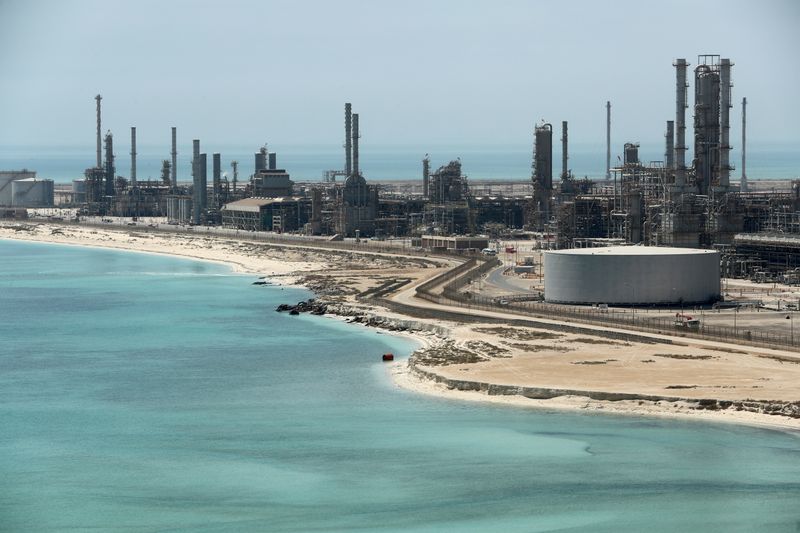By Jessica Resnick-Ault
NEW YORK (Reuters) -Oil prices pulled back after touching multi-year highs on Monday, trading mixed as U.S. industrial output for September fell, tempering early enthusiasm about demand.
Production at U.S. factories fell by the most in seven months in September as an ongoing global shortage of semiconductors depressed motor vehicle output, further evidence that supply constraints were hampering economic growth.
"The oil market started off with a lot of exuberance, but weak data on U.S. industrial production caused people to lose confidence in demand, and China released data that intensified those worries," said Phil Flynn, senior analyst at Price Futures Group in New York.
Brent crude oil futures settled down 53 cents or 0.6% at $84.33 a barrel after hitting $86.04, their highest since October 2018.
U.S. West Texas Intermediate (WTI) crude settled 16 cents higher, or 0.19%, at $82.44 a barrel, after hitting $83.87, their highest since October 2014.
Both contracts rose by at least 3% last week.
Weaker industrial data was compounded by rising production expectations on Monday, further weighing on market sentiment.
U.S. production from shale basins is expected to rise in November, according to a monthly U.S. report on Monday. [EIA/RIG]
Oil output from the Permian basin of Texas and New Mexico was expected to rise 62,000 barrels per day (bpd) to 4.8 million bpd next month, the Energy Information Administration said in its drilling productivity report. Total oil output from seven major shale formations was expected to rise 76,000 bpd to 8.29 million bpd in the month.
The early push higher on Monday came as market participants looked to easing restrictions after the COVID-19 pandemic and a colder winter in the northern hemisphere to boost demand.
"Easing restrictions around the world are likely to help the recovery in fuel consumption," analysts at ANZ Bank said in a note, adding gas-to-oil switching for power generation alone could boost demand by as much as 450,000 barrels per day in the fourth quarter.
Cold temperatures in the northern hemisphere are also expected to worsen an oil supply deficit, said Edward Moya, senior analyst at OANDA.
"The oil market deficit seems poised to get worse as the energy crunch will intensify as the weather in the north has already started to get colder," he said.
"As coal, electricity, and natural gas shortages lead to additional demand for crude, it appears that won't be accompanied by significantly extra barrels from OPEC+ or the U.S.," he said.
Prime Minister Fumio Kishida said on Monday that Japan would urge oil producers to increase output and take steps to cushion the impact of surging energy costs on industry.
Chinese data showed third-quarter economic growth fell to its lowest level in a year hurt by power shortages, supply bottlenecks and sporadic COVID-19 outbreaks.
China's daily crude processing rate in September also fell to its lowest level since May 2020 as a feedstock shortage and environmental inspections crippled operations at refineries, while independent refiners faced tightening crude import quotas.

Global trade has swiftly recovered from pandemic lows, Bank of America (NYSE:BAC) commodity strategist Warren Russell said in a note. Trade levels are up 13% year to date, and 4% higher than 2019 levels. The trade indicates rising crude demand as economies recover from the pandemic, the analysts said.
"Financial assets like oil should perform strongly into 2021," the analysts said.